Do some of your orchids form roots above their pots? This could give you the impression that the plants are already well grown and that it is time to repot them… Sometimes we even ask ourselves the question: what is actually the role of these extensions and should we cut the aerial roots of the plants? orchids? To clarify the situation for you, today we explain how to handle these parts of the exotic plant and above all how to intervene adequately without compromising its health.
Focus of the day: Should we cut the aerial roots of orchids?
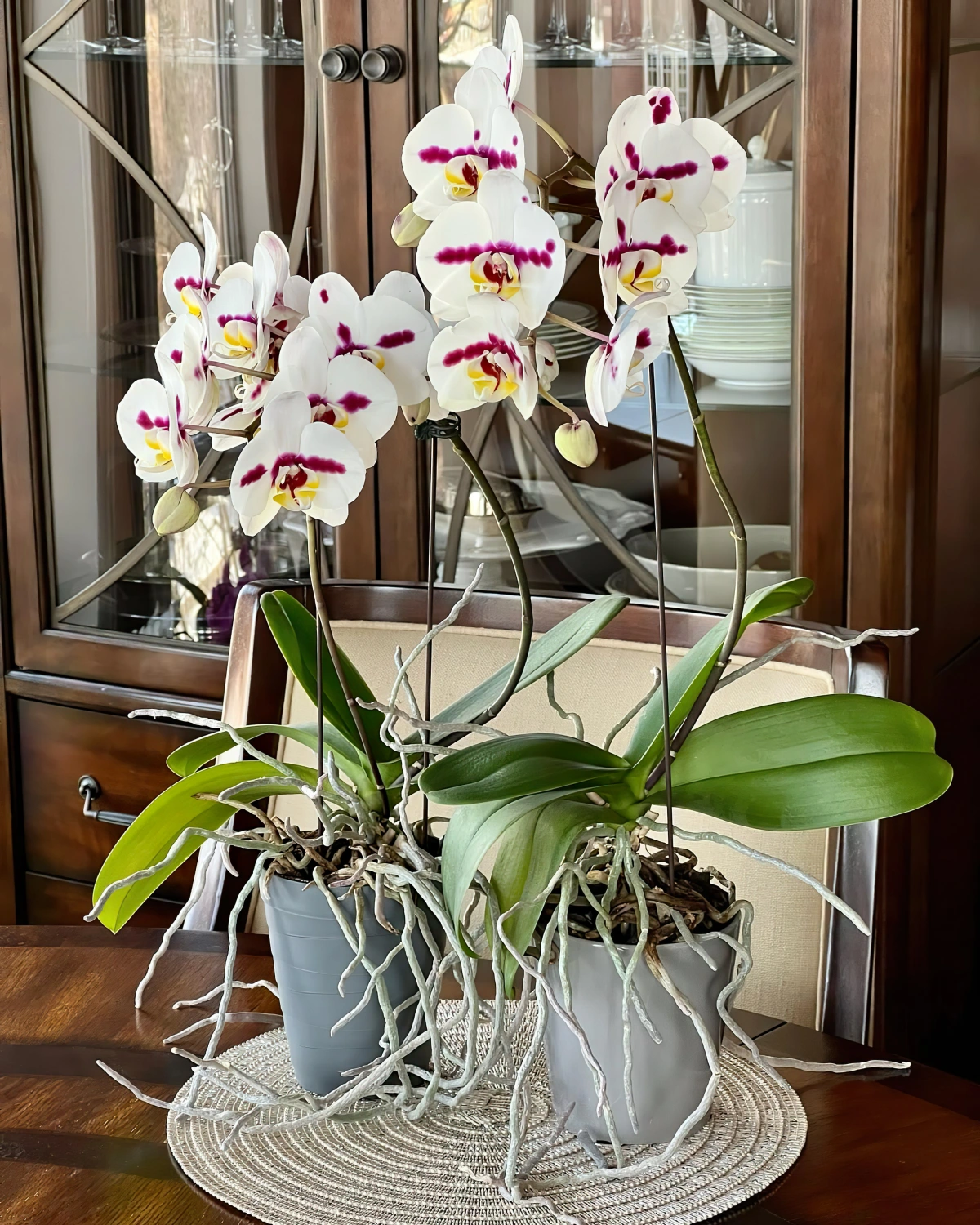
Why does my orchid have aerial roots?
Before we get down to business, it is appropriate to say a few words about these aerial roots and why they actually appear.
In their natural habitat, a large portion of orchids, including the popular Phalaenopsis variety, are epiphytic species. In other words, this type of plant clings to other plants, most often trees, in particular using their aerial organs aka aerial roots.
Their appearance is therefore normal in the majority of orchid varieties and also in many other epiphytic plants such as, for example, Monsteras.
These are organs that help the plant on several points
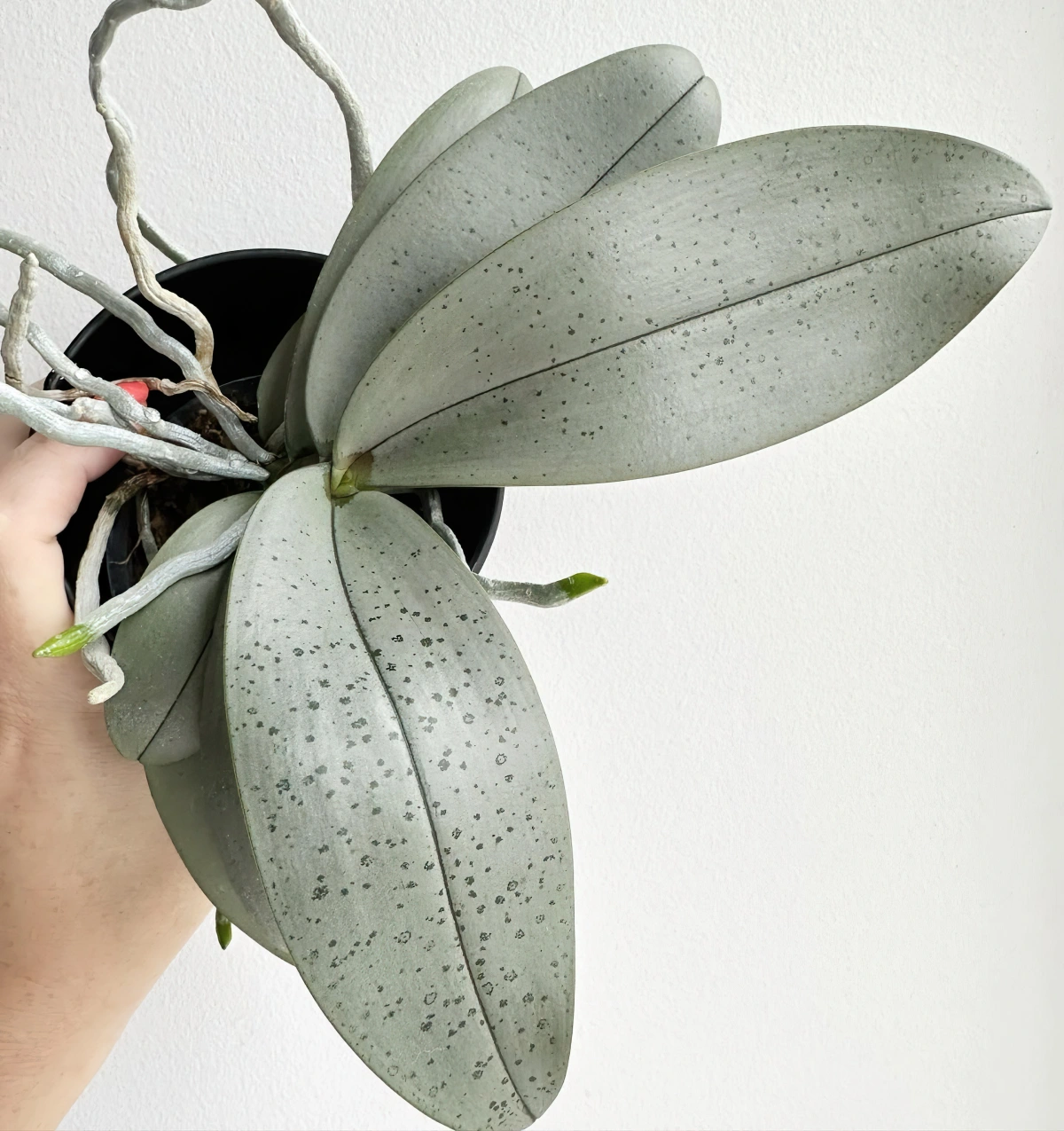
What is their role ?
In addition to serving as auxiliary structures that make it easier for orchids to attach to other plants, aerial roots can play other important roles.
- For example, plants can use them to absorb moisture and nutrients from the air. This is a well-known practice in very hot and humid areas.
- Aerial roots also have the ability to store nutrients and water.
- And latterly, these organs can help photosynthesis. This is very beneficial in places where there is not enough direct light.
Aerial roots can play different roles in the prosperity of the orchid
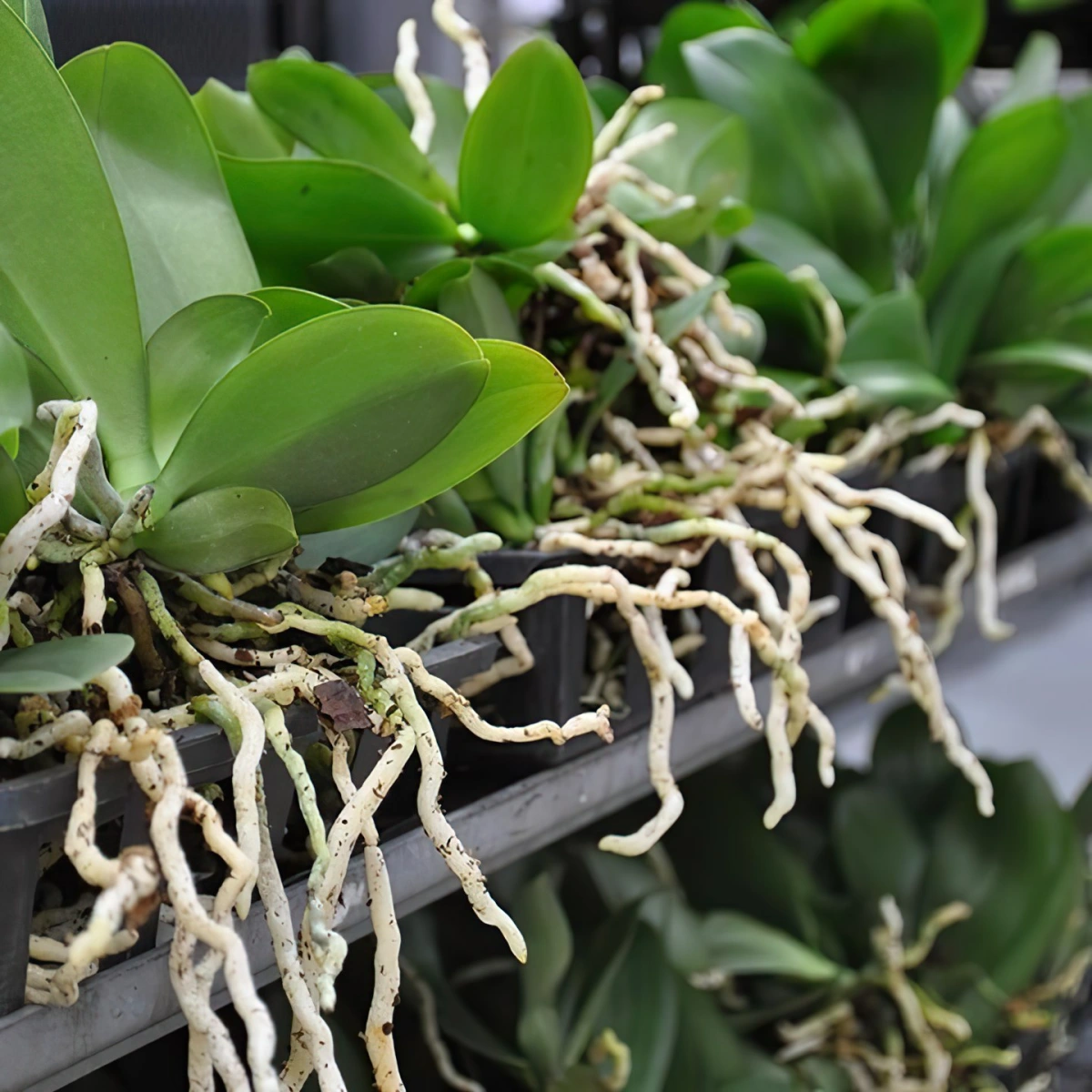
Should we cut the aerial roots of orchids?
All this being said, it is understood that these aerial organs are quite useful even for growing indoors. So generally it is advised not to touch them. In addition to depriving the plant of this extra help, such handling could damage it and increase the risk of bacteria and disease.
It is generally recommended to leave them intact and to intervene only when they are damaged or diseased.

Orchid with aerial roots that dry out: what to do?
Sometimes, when the plant is grown in an environment with low humidity conditions, the aerial roots tend to shrivel and dry out over time. In this case, you can gently remove the damaged parts. The intervention should be carried out once the flowering period is over. Here are some clues how to proceed.
- Water the orchid before handling to keep it hydrated.
- Use a sharp and necessarily sterilized tool. For these purposes you can wipe the blades with alcohol, for example.
- Then, cut the dry roots as close as possible to the stem, being careful not to damage it. Work with clean cuts.
Dry aerial roots can be cut but with caution
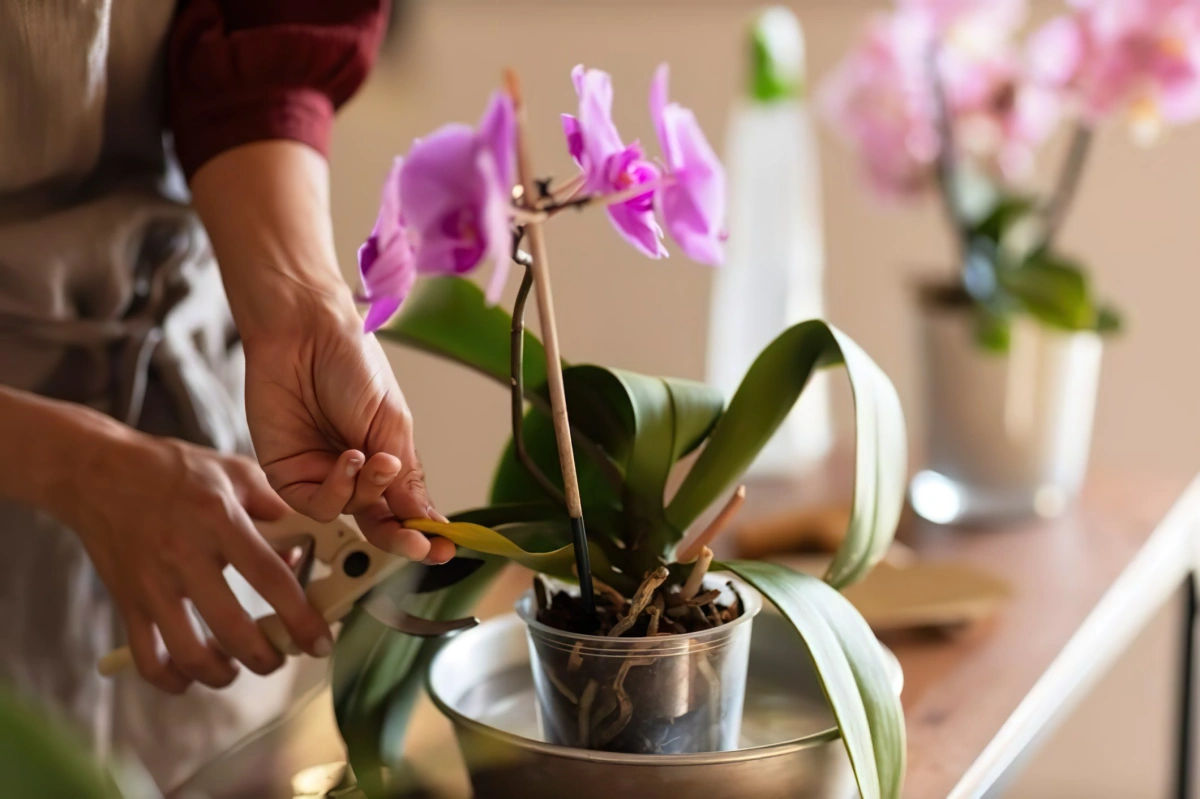
Repotting an orchid with excessive aerial roots
In previous articles, we have explained to you when and how to repot an orchid. Thus, we learned that repotting orchids should only be done when it is essential.
However, if you absolutely want to get rid of aerial roots, it is less dangerous to opt for repotting and burying them rather than removing them entirely.
For this operation, simply opt for a larger pot and bury the roots in special orchid substrate. Then, we advise you to reduce watering slightly because given the greater number of roots below the surface, there will logically be more water remaining in the pot. And we don’t want to leave the plant soggy because this seriously endangers its health.
Note: We must specify that this manipulation could present a certain risk for the plant. So if it’s not necessary, it’s best to avoid it.
Repotting is a possible alternative but not possible except in extreme cases
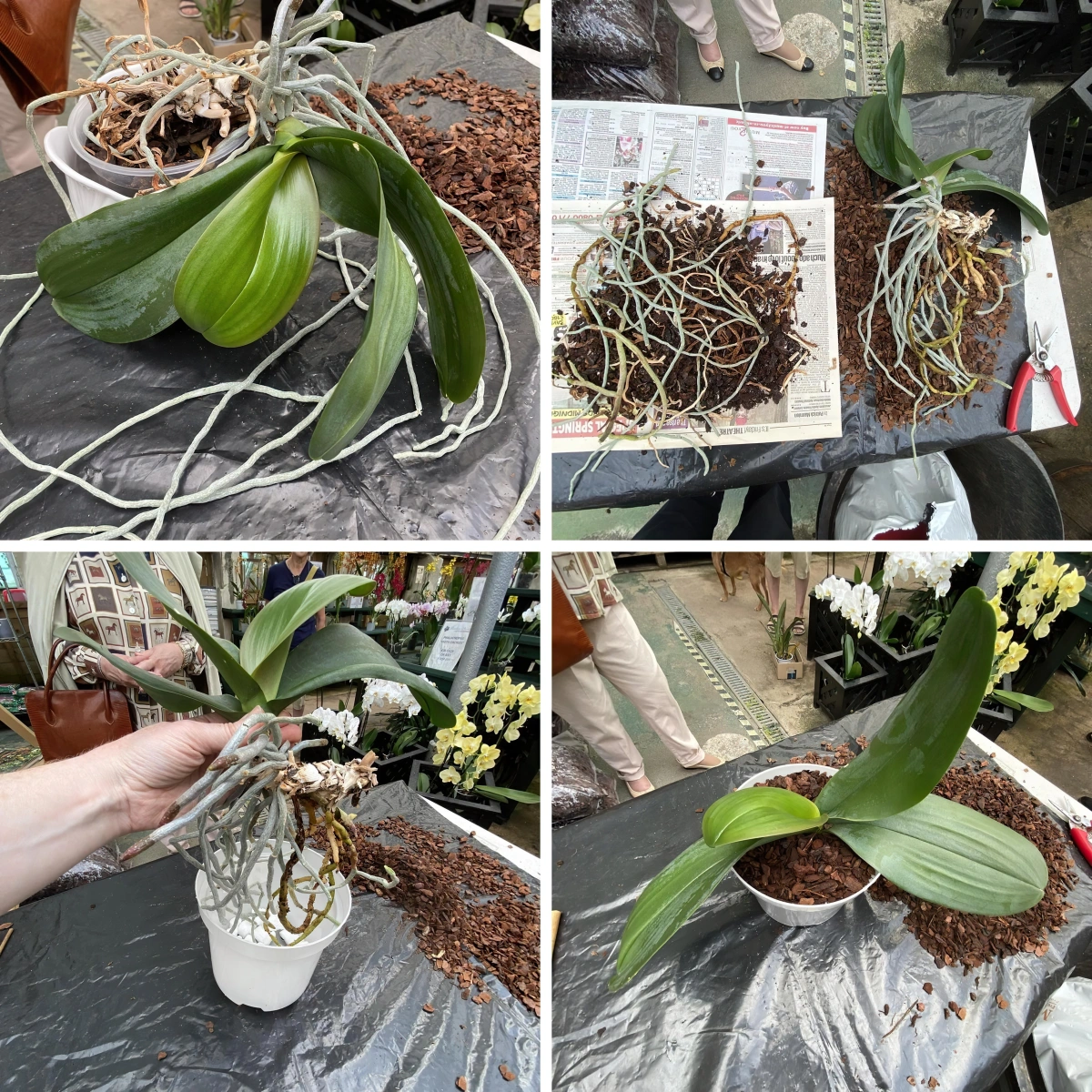
Tip for hiding unsightly roots
Quite often, orchids are grown in transparent containers, which are placed in larger, more aesthetic planters. You too can try this practice, by opting for a planter larger than the pot of your orchid. After placing the pot in the planter, gently push the aerial roots into the sides of the decorative pot. This should camouflage them to some extent. However, be sure to drain the pot after watering so as not to leave the aerial roots soaked in excess water.
Little tip to improve the aesthetic appearance of orchids: put them in larger planters which will camouflage the aerial roots a little
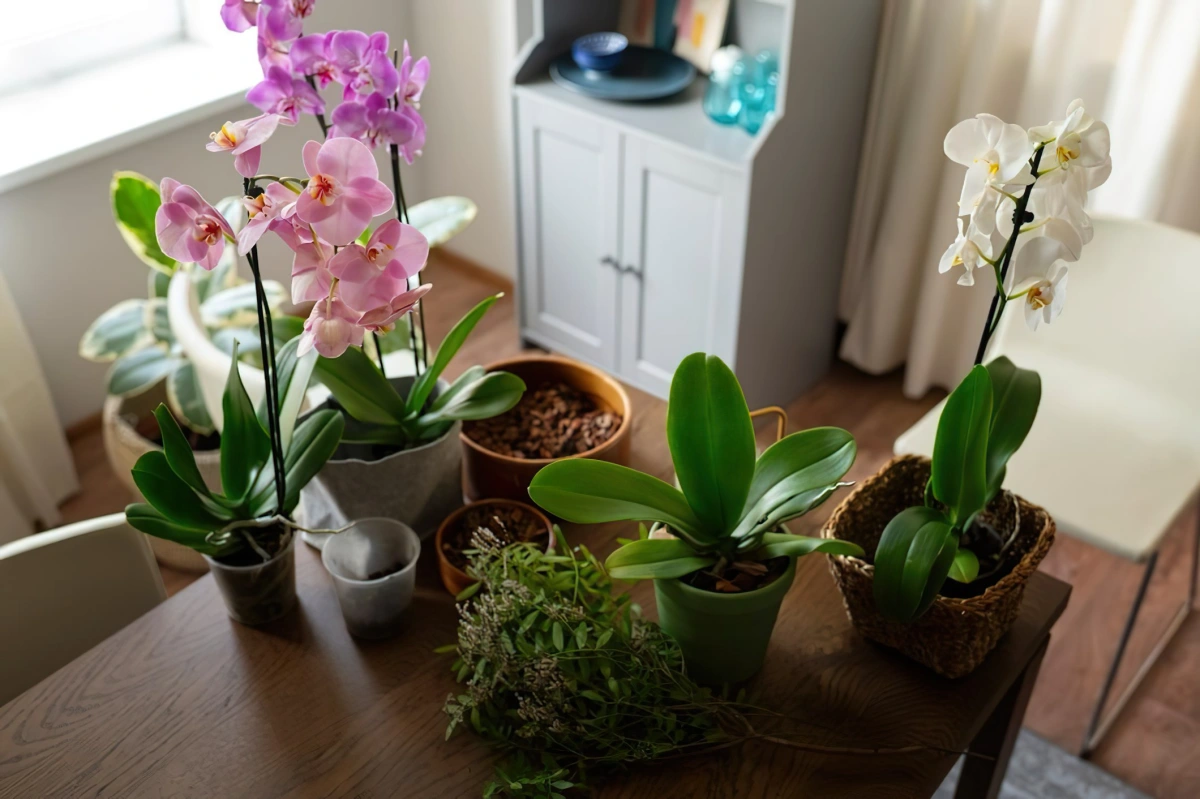
Normally, these do not require any additional care. If you care for the plant properly, the aerial roots will also be in good shape. As a result, just like normal roots, aerial organs can also become subject to problems that commonly affect orchids (infestations, diseases, etc.).
Ideally, we leave them alone!





